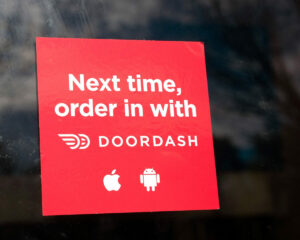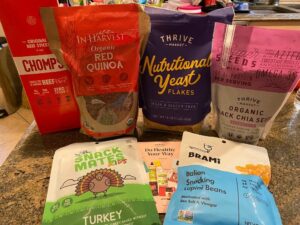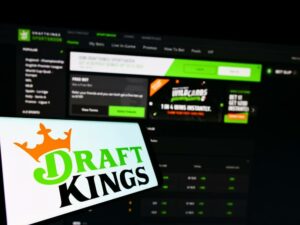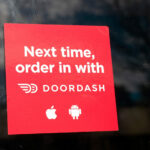They say life is a gamble, and few other sites take that adage more seriously than HealthyWage.
The premise is simple. Choose a weight loss goal, put up some cash, and if you meet that goal in the amount of time you allocated for yourself, reap the rewards. Fail, and lose your initial stake.
But how does HealthyWage work behind the scenes?
HealthyWage uses an algorithm to determine how much your weight loss goal is worth, and that algorithm spits out a very wide range of prize values. Some will be offered pennies on the dollar, while others will have the opportunity to double or even triple their initial stake. Which category you fall into is determined by a whole slew of demographics and other factors, and the process is not exactly intuitive.
In this HealthyWage overview, we dissect the algorithm, share our results, and touch on other features and game modes that HealthyWage has introduced. Trust us when we say, you need to know the information we’re about to share before gambling on your weight loss goals.
- How does HealthyWage work?
- Other HealthyWage game modes
- Is HealthyWage worth it?
- Calculating the ROI
- Who gets the most out of a HealthyWager challenge?
- Maximizing your potential winnings on HealthyWage: Step-by-step
- Calculating the break-even point
- Healthywager: Other considerations
- Healthywager prize boosts
- HealthyWage referrals
- HealthyWage FAQ
How does HealthyWage work?
HealthyWage is a legitimate business that has been around since 2009. It has a Better Business Bureau rating of “A+”, its mobile apps are favorably reviewed, and it’s been featured on a ton of TV broadcasts. Perhaps most importantly, the company’s gambling angle appears effective at motivating people to meet their weight loss goals.
In short, if you participate in a contest on HealthyWage, follow the rules, and win, you shouldn’t have any fears about being scammed.
The site’s primary game mode is called Healthywager, and it functions as a personal weight loss challenge. Users bet on themselves to lose a certain amount of weight over a certain period of time. Generally speaking, more aggressive weight loss goals will yield a higher return on investment.
Here’s a brief overview of how to set up a Healthywager:
Step 1: Calculating your prize amount
To get started:
- Input how many lbs. you want to lose (has to be a minimum of 10% of your current body weight).
- Select the time frame that you want to lose it in (6-18 months, in one-month increments)
- Choose the amount you want to wager ($5 – $995 per month of the challenge, minimum $100 total).
Next, HealthyWage will ask for your height, weight, gender, and a valid email address (or linked Facebook account). Then comes the moment of truth, as HealthyWage will calculate a prize based on your BMI (body mass index).
You won’t be under any obligation to commit at this point, but should you take the next steps, then you’ll cross the point of no return.
Step #2: Payment and weight verification
As you probably have guessed, HealthyWage doesn’t work under the honor system.
You’ll need to provide a valid credit card, and either pay the full amount upfront or in monthly installments. If you typically invest your money (as you should), then it’s probably best to pay monthly, since you’ll be losing out on interest by paying the whole shebang upfront. Use a cashback card if possible. Might as well take advantage of every money-making opportunity.
From the detective’s desk: HealthyWage does not typically offer refunds or cancellations, so if you foresee any event that will prevent you from losing weight (a health issue, upcoming surgery, etc.) don’t participate. HealthyWage will suspend challenges for pregnant women, but that’s about it.
Once payment is secured, it’s time for the weigh-in. You have two options here, either:
- Download the iOS/Android app, and follow the on-screen instructions. You’ll need a smartphone and a scale for this method to work, and you’ll have to feel comfortable with HealthyWage’s referees remotely witnessing your weigh-in.
- You can create a weigh-in video, and upload it to the HealthyWage website.
If you’re skittish about showing others your weight, well…too bad? Just know that the refs probably see hundreds of weigh-ins a week.
At that point, it’s up to you how much or little you want to engage with the mobile app. The app is meant to be a motivator and not a weight loss tracker.
Step #3: Winning and getting paid on HealthyWage
Starting two weeks before your challenge’s end date, you have the option to weigh-out. Again, the refs will verify your weight and identification, and if you hit or exceed your goal, you’ll be given the option to receive payment via PayPal or paper check. Or you could hold on to your HealthyWage (HW) points for a subsequent challenge. In the latter case, do yourself a favor and familiarize yourself the Yo-Yo rule either on HealthyWage or in our FAQ.
Both withdrawal options come with a nasty fee attached: 2.9% + $0.30 for PayPal or $7 for a paper check. They really need to do something about this, the burden should not fall on the participant.
Paper checks take about 1 -3 weeks to come in the mail, while PayPal typically processes within 2 – 5 business days.
Other HealthyWage game modes
Since its inception, HealthyWage has added a variety of game modes. Contestants can stack several weight loss challenges for even greater winnings, and potentially, larger losses.
HealthyWage Team Challenges
Team Challenges allow you and four friends, family members, or colleagues to work together toward your weight loss goals. Unlike Healthywagers, Team Challenges start at pre-designated times and typically go off about once a month.
Each team member pays a predetermined entry fee and agrees to the length of the challenge, which is also predetermined. Then, once the challenge starts, the teams go head-to-head with one another, competing for a $10,000 prize pool.
Team members are asked to log weekly weigh-ins, but only the final verified weigh-in counts toward the official rankings. Prizes are determined based on a team’s final standing, which itself is based on the team’s average percentage weight loss. For instance, if three team members lose 10% and the other three lose 5%, the team’s average weight loss is 7.5%.
There are a few caveats worth knowing about:
- Weight loss is capped at 16.59% of a team member’s starting weight. Any additional weight loss won’t count toward the team’s average.
- Teams are locked in 14 days after the challenge starts. The only exception is if a team member gets pregnant. Then, HealthyWage allows the team to continue with 4 members.
- Anyone that has won a top prize of $200 or more is not eligible to win another top prize.
HealthyWage Jackpot Challenges
Jackpot Challenges on HealthyWage are individual and team challenges, where each member pays a predetermined entry fee and competes for a portion of the collective pot.
The challenges usually range from 1 to 3 months and the entry fees run the gamut from just $30 up to $250. To win, either the individual or the team has to lose 4-6% of their weight before the challenge ends. All winners receive a slice of the pie, split evenly.
Jackpot Challenges are risky undertakings because HealthyWage takes an enormous share of the pot, 25% plus any uncollected payments. The upside is that if more than 75% of participants reach their goal, HealthyWage guarantees that winners will receive their entry fee back. However, just breaking even isn’t exactly an enticing incentive.
At least players who break-even will be down 6%+of their body weight. For some, that’s motivation enough.
HealthyWage Step Challenges
Finally, HealthyWage offers Step Challenges. These work similarly to Jackpot Challenges in that participants pay a set entry fee and have a specific amount of time to reach the goal. Also, HealthyWage takes the same 25% administrative fee for Step Challenges that it does for Jackpots.
The main difference is that the goal is personalized for you by HealthyWage, and instead of reaching a weight loss goal, contestants are tasked with a step goal. Their progress is tracked via a valid step-tracking device, including Fitbit, Garmin, and Google Fit. Should a contestant not have enough data for HealthyWage to determine an adequate goal, the goal will default to an average of 10,000 steps daily.
Players can compete individually or in teams of up to 9 members. The pot is split among all winners, and HealthyWage guarantees that winners will at least receive their money back.
The average pot size appears to be in the vicinity of $4,000 – $5,000 and entry fees run from free to $100.
It goes without saying, that contestants must install the HealthyWage mobile app to participate in step challenges. They’ll probably want to anyhow, as the app provides a bunch of useful stats and social features that may be motivating factors.
Is HealthyWage worth it?
It really depends. If money is a strong motivating factor for you to lose weight, even if it’s a trivial amount, then yes, HealthyWage is probably worth it.
However, for most participants, the return on investment is going to be quite small, and there is of course the prospect of losing money. Those who simply can’t afford to have their money tied up for months, or who are struggling financially, should not be gambling on themselves, even if it’s a gamble they have control over.
An Important Note
The duration of this article will break down the HealthyWager payout algorithm.
The TL;DR version is that moderately/severely obese persons (BMI = 35+), particularly women, are offered far better returns than people whose BMI is categorized as overweight or mildly obese.
In addition, more aggressive weight loss goals are correlated with larger payouts, as expected. However, due to the hard payout caps that HealthyWage sets, players are advised to not risk too much money. To clarify, wagering $300 total may result in a far better return on investment than wagering $1,000+.
Read on for more details.
Calculating the ROI
ROI stands for return-on-investment and is a measurement of how much money you can make relative to the amount risked. The formula is as follows:
ROI% = Profit / Amount Wagered * 100
In terms of HealthyWage dynamics, let’s say you wager $300 and are offered $800 for winning.
If you win the profit amount is $800 minus the initial investment of $300, or $500. The amount wagered is $300, so the ROI is simply $500 / $300 or 1.6667. Multiply that by 100 and you get 166.67%. Congrats, that’s a nice return.
From the detective’s desk: The higher the ROI, the better. A 100% ROI means you doubled your money, a 200% ROI means you’ve tripled it.
Lose it all and the ROI becomes -$300 / $300 * 100 or -100%. Ouch.
At HealthyWage, if you lose, the ROI is always going to be -100%.
Now that the math lesson is out of the way, let’s see which demographics benefit from the highest ROIs. We think you might be surprised.
Who gets the most out of a HealthyWager challenge?
For our initial data collection, we wanted to make sure that we were casting a wide net. We settled on the following variables to compare:
- Starting size: Overweight (Body Mass Index, or BMI, of ~28.5) vs. Obese (BMI ~38.5)
- Height: Below average vs. above average
- Percentage of body weight to lose: 10%, 20%, and 25%
- Contest length: 6, 12, or 18 months
- Amount wagered: $50 or $200 per month
To neutralize any sort of gender bias, we looked at equivalent height percentiles and BMIs for both men and women.
Then, after collecting the data and determining the ROIs for each category, we dug a little bit deeper, and looked at a variety of ROIs for men and women with BMIs between 25 (barely overweight) and 40 (borderline morbidly obese), just for good measure.
You can download and view our data set here:
Women vs. Men
Women have much more to gain financially from a HealthyWager than men. The difference here was pretty staggering, with women in our data set averaging a 69.4% ROI, versus just 42.3% for men.
In other words, if a man and a woman with the same BMI wagered the same amount, and took the same amount of time to complete his or her challenge, the woman would win 69.4 cents for every dollar wagered, and the man just 42.3 cents.
Whether that is fair or not is irrelevant to us, but it’s definitely something you should know about before investing your hard-earned cash.
Overweight vs. Obese
If you thought the ROI gap between women and men was large, the disparity between overweight and obese folks is downright jaw-dropping.
Our overweight group averaged a 33% return on their investment versus a 78.7% ROI for our obese group. Digging deeper we verified that starting BMI is indeed directly correlated with how much money you’ll win per percentage of body weight lost.
From the detective’s desk: Under most circumstances, the higher the starting BMI, the greater the ROI.
Admittedly, this one struck as odd. On one hand, we get why a site might want to incentivize heavier people, as they pose a higher risk of developing daunting health problems. On the other, a merely overweight person shedding 10% or 20% of their body weight is no small feat. Shouldn’t that be well rewarded?
Apparently, HealthyWage doesn’t think so.
Shorter vs. Taller
We didn’t expect HealthyWage to alter its payouts based on height, and for the most part, our expectations were met.
Taller people in our sample had an ROI of 58.1%, and those below average height saw a 53.6% return. That difference is minuscule enough that we’ll chalk it up to a margin of error.
Contest length
As expected, shorter contest lengths resulted in a higher ROI:
- 6 months: 72.6% ROI
- 12 months: 54% ROI
- 18 months: 40.9% ROI
Of course, a shorter contest length comes with an increased risk of failure, so it makes perfect sense that HealthyWage would give those determined to meet their weight loss goals in as little time as possible a meatier incentive.
If anything we were a little surprised that the penalty for taking your sweet time wasn’t even greater. In fact, there were instances where the ROI for completing a challenge in 12 or 18 months was exactly the same.
This confused us, but all was made clear when we looked at our final metric: The amount wagered.
Smaller wagers vs. Larger wagers
At this point, we can make some basic conclusions about who can benefit the most from a HealthyWager challenge. In order of average ROI, from high to low:
- Obese women (BMI above 35)
- Obese men
- Overweight women (BMI between 25 – 29.9)
- Overweight men
Further analysis showed that mildly obese women (30 – 34.9 BMI) generated roughly the same ROI as obese men, and mildly obese men saw approximately the same returns as overweight women.
So, increasing the wager shouldn’t change anything right? After all, if two people playing Roulette bet on black, one for $10 and the other for $100, both double their money (100% ROI) if they win. The guy who bets $100 doesn’t get penalized for betting too much. That would be nuts.
Well, on HealthyWage, that’s exactly what happens, and we find it utterly absurd. Yes, you are actually punished for betting too much. Why HealthyWage does this is beyond us, but we’re assuming it has something to do with risk management.
In our sample, those who bet $50 per month will average an 80.6% return if they win, whereas those who risk $200 per month will only achieve a 31.1% ROI. That’s an alarming difference, larger than any other single metric we analyzed.
The reason for this discrepancy is that HealthyWage imposes two types of limitations on payouts. Let’s take a look at what they are, and determine the best course for getting around them. Because quite frankly, if you don’t work around them, you’re getting screwed.
Payout restriction #1: $ paid per pound lost
HealthyWage caps the amount of money you can win per pound lost. Outside of a few very sweet spots, we deduced that the most a man can win is $12.80 per pound lost, and for women, $24.00 per pound lost (this partially explains why women in our sample had such a higher ROI).
To clarify, let’s say that a woman who wagers a total of $1,000 and wants to lose 50 pounds is offered a maximum payout of $2,200 (her initial stake of $1,000 plus a profit of $1,200, which is 50 * $24 per pound lost). Since she has already hit the cap, HealthyWage won’t increase her winnings if she wagers more. So if she ups the ante to $2,000, she’ll still only profit $1,200 if she wins.
By wagering twice as much, our unfortunate woman receives no additional benefit. Her ROI is slashed in half, even though she met the same exact weight loss goal. Crazy, right?
Payout restriction #2: Hard net earnings cap
If your BMI is below approximately 35, HealthyWage also caps the amount of money you can win, period.
Take a look at this:

Notice that regardless of whether this woman wagers $50 or $200 per month, she’ll still receive the same $640 profit for losing 25% of her body weight over 12 or 18 months. Wagering $50 per month will result in a respectable ROI, but wagering $200 per month will be catastrophic.
This restriction typically only impacts overweight or mildly obese women, as men are too heavily impacted by the first restriction ($ paid per pound lost) to ever realistically reach the net earnings cap. And as we mentioned, obese and morbidly obese folks are not subject to this restriction.
To further complicate things, HealthyWage uses a formula based on BMI to determine what your maximum net earnings will be. Those with a lower BMI will see their earning potential more severely restricted compared to those with a BMI close to 35. Listed below are a few examples:
We understand that this may be a lot to take in, so if you only remember one thing, it’s that wagering more can be very detrimental.
Now, let’s walk you through a simple process of achieving the maximum ROI.
Maximizing your potential winnings on HealthyWage: Step-by-step
Regardless of your weight loss goals, we suggest taking the following steps before locking in a wager.
- Choose a weight loss goal that you’re comfortable with.
- Enter in a really low stake amount (as close to $100 total as possible).
- Calculate the ROI% of this wager, and jot it down somewhere.
- Now change the wager amount to what you actually want to bet.
- Calculate the ROI% again. If it’s the same or close, great — that’s an acceptable bet.
- If the ROI is significantly lower, increment your monthly wager downward. Calculate ROI again.
- Repeat Step #6 until your ROI% is at least close to what it was in Step #1.
By failing to go through this process, you run a strong risk of getting shortchanged. Don’t give the house any more of an advantage than it already has.
As an example, let’s say Mary is 5’6″ and 250lbs and wants to lose 75lbs over the next 12 months. She wants to wager $250 per month for a total wager of $3,000.
Now that she has a weight loss goal, Mary should see what kind of ROI she’d get on a small wager of $10 per month.
Remembering our formula it’s (profit/amount wagered) * 100, or ($426.35/$120) * 100 = 355.29%. Wow, that’s incredible. Let’s push the monthly wager up to $250 a month and see what happens.
Hmmm, this doesn’t look so good. It’s clear Mary has reached the “$ paid per pound lost” cap at $1,800 / 75 = $24. The ROI of this wager is just 60%, and since Mary thoroughly read this article, she knows that she’s going to have to wager less in order to maximize her return, probably way less.
She decides on $50 wagered per month. Now, the ROI jumps to 195.29% — much better, but not nearly as good as what it was at $10 wagered monthly. She tries $25. Now it shoots up to 235.29%. That’s great, Mary can win $705.88 on a $300 investment. She may choose to not go any lower, or she could go for an even higher ROI by dipping the monthly wager just a bit more.
As she decreases the wager, it becomes apparent that the only way to achieve an ROI above 350% is to not raise the stake at all. Even at $15 per month, Mary’s ROI would only be 288.63%.
That may be close enough for Mary, or she might want to max out her return at $10.
We chose this extreme example because it clearly illustrates that the best wager to make on HealthyWage is often the smallest. Obviously, you won’t make as much money, but you’re making a much better gamble.
Calculating the break-even point
Now that you’ve found your sweet spot, we recommend asking yourself the following question before committing to the challenge:
What percentage of the time do you have to win to break even? We’ll calculate this using the following simple formula:
Break-even point: Stake / Stake + Profit * 100
Going back to Mary, if she sticks with the $10 monthly wager, her total stake will be $120 ($10 per month for 12 months) and her stake + profit will be ($120 + $426.35 = $546.35)
$120 divided by $546.35 is .2196. Multiply this by 100 and we see that Mary only has to win 21.96% of the time to break-even on her wager.
Compare this to the scenario where she bet $250 a month. Here the break-even percentage is a staggering 62.5%. Yeah.
Once you have your break-even percentage, it’s not a bad idea to ask yourself if you really think you’ll succeed that percentage of the time or more. If yes, go for it. If the answer is no, you may want to rethink your weight loss goals.
Healthywager: Other considerations
- If your winnings are over $600, then you’ll be required to report to the IRS via 1099. Just another reason to keep your wager small.
- HealthyWage tweaks its algorithm all the time and may pay bigger (or smaller) prizes depending on the time of year.
- Swagbucks is offering new HealthyWage customers $40 cashback in the form of 4,000 SB, should they wager at least $200. That’s a 20% return, and shouldn’t be overlooked. SBs can be redeemed for gift cards or for PayPal cash. The SBs will pend for 32 days after claiming the offer.
Healthywager prize boosts
HealthyWage throws out special offers at certain points during the year, in the form of prize boosts.
- % boost: HealthyWage will offer a 25% prize boost on your next HealthyWager
- $ boost: HealthyWage will add $100 to your next HealthlyWager
These boosts only apply to HealthyWagers, and are not available to customers with an active HealthyWager challenge. They also cannot be combined with other promotions.
Prize boosts are typically offered about once per month to registered members. It is highly advantageous to wait until a prize boost is active to start a HealthyWager challenge.
HealthyWage referrals
HealthyWage members can also take advantage of the app’s referral system, which is quite lucrative.
Members earn an additional $40 on their next HealthyWager for each friend that signs up via your referral link and enters a HealthyWager challenge. In addition, the referred friend will also receive $40 on their next HealthyWager.
Members can boost their referral earnings even further by referring friends during the first 10 days of their HealthyWager challenge. Doing so increases the referral bonus for yourself to $100.
HealthyWage FAQ
What is the HealthyWage Yo-Yo Rule?
The Yo-Yo rule is meant to prevent HealthyWage users from gaming the system. It reduces the potential payout of past HealthyWager challenge winners that have regained some (or all) of their weight, and who enter another contest.
The rule came under fire when it was first introduced, as returning winners who were in the middle of a new challenge had their challenge shut down. However, all affected participants were reimbursed.
Initially, participants were banned from competing in a second challenge if they had gained any of the weight back, but HealthyWage has since softened its stance to allow them to compete, but with reduced monetary incentives.
Does HealthyWage allow cancellation?
Generally, no. HealthyWage will suspend your challenge if you get pregnant during a challenge. However, you must provide proof of pregnancy within 60 days, and the challenge is only paused. Once able, you must resume the challenge or start it over. You must also resume monthly installment payments.
Rarely, HealthyWage may let you cancel a challenge, pending you supply evidence-documented medical info. HealthyWage is vague as to what medical conditions qualify.
Finally, you may not have bariatric surgery during or within one year prior to their challenge, and any surgery that reduces your weight by 5 pounds or more may cause HealthyWage to suspend, void, or adjust a participant’s current challenge.
How does HealthyWage money? Is it a scam?
HealthyWage is not a scam, not at all.
The company makes money via a variety of legitimate means. Its most common revenue source is from participants who lose their wager. It is estimated that no more than 40% of users win their challenge.
A sizable chunk of the revenue generated from losing wagers is used to pay out winners.
That being said, the HealthyWage algorithm is conservative and sets hard caps on the amount of money that can be won. Overweight, but not obese, players that set modest weight loss goals may only see a 10 – 40% return on their investment. Aggressive weight loss goals will generate better payouts but have a much lower chance of success.
HealthyWage also makes money by collecting 25% administrative fees from its Jackpot and Step Challenges. In fairness, HealthyWage guarantees that winners will at least receive their entry fee back, but the 25% base rate is hefty.
Finally, HealthyWage may make money from its sponsors.
How do you contact HealthyWage customer service?
HealthyWage can be contacted via email at info@healthywage.com, by submitting a support ticket, or by phone at (888) 964-3499.
Is Jillian Michaels partnered with HealthyWage?
Yes, the Biggest Loser star is a paid endorser for HealthyWage, and acts as the face of Jillian’s HealthyWager Challenge, which is an individual weight loss challenge, where participants bet on themselves to reach their weight loss goals.


























